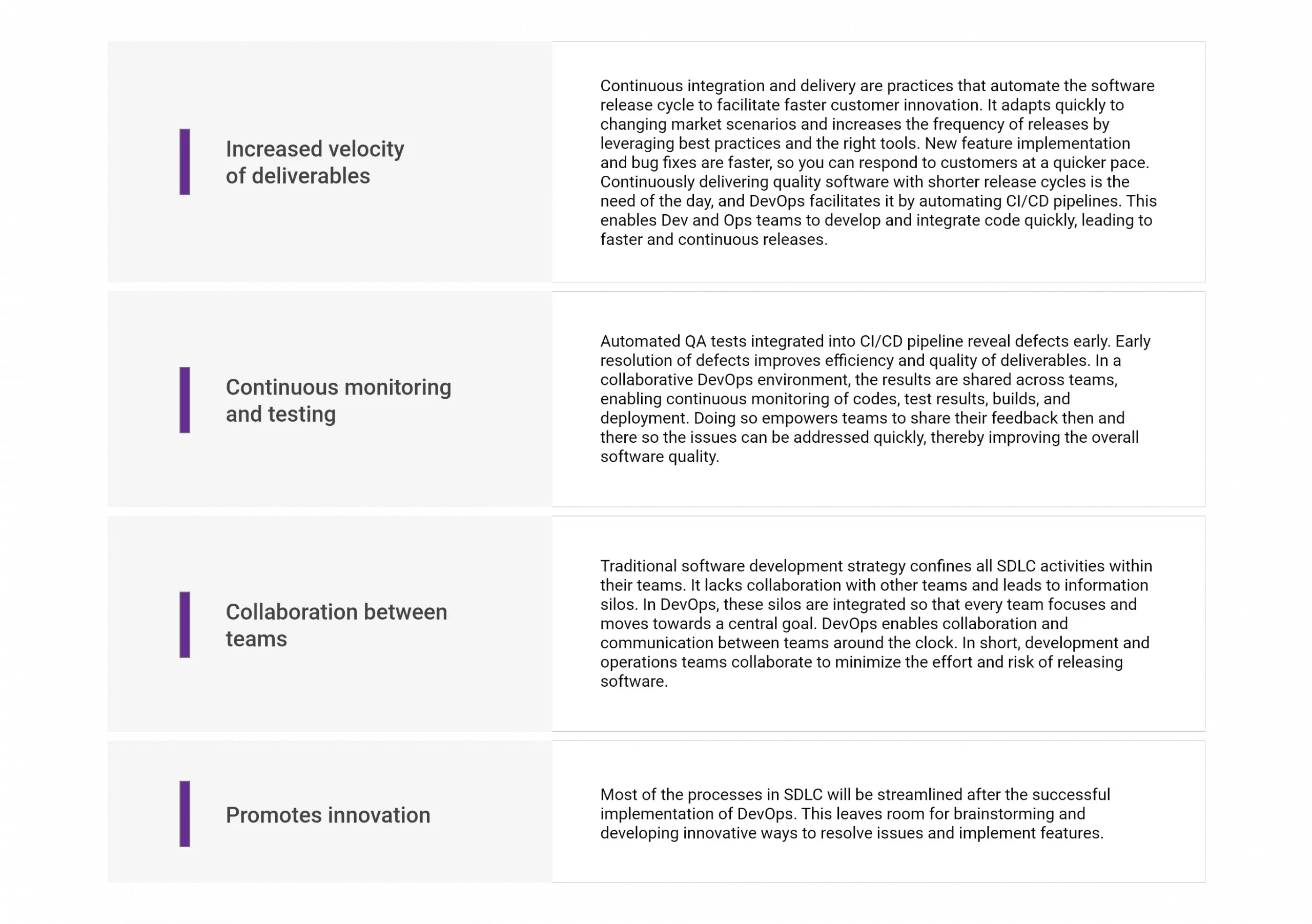Introduction
It is a prevalent fact now that DevOps is the key to any accelerated development or transformation initiative. It quickly grabbed the attention of the IT industry for all the right reasons. Due to its fast-paced working environment, shorter turnaround time, high-quality output, and lesser post-production errors, DevOps was quickly adopted by many development teams. In this article, we will look into how DevOps accelerates business growth.
Why DevOps?
DevOps is a combination of development and operations principles and philosophies. It is a methodology comprising many concepts, techniques, tools, and practices. These components help fully automate the process between development and operations, enabling development and deployments at incredible speeds in short and controllable iterations. DevOps is not just about development and operations teams working together and leveraging the right tools. It is a cultural shift and mindset to adopt new ways of working.
Here are some reasons why businesses are adopting DevOps:

Key metrics of DevOps
The following are the five-key metrics for DevOps performance.

Key principles of DevOps
Automation
In a DevOps environment, all tasks which can be automated should be automated. Instead of manually checking code for errors and bugs, we can automate this by leveraging tools that do the tasks in a single command. Automating SDLC processes allows developers to focus on writing code and developing new features. Infrastructure provisioning should also be automated to meet the market demands with Infrastructure as Code (IaC) tools and continuous delivery pipelines.
Continuous integration
This encourages developers to commit their code multiple times a day, thus integrating smaller chunks of code regularly, which avoids the likelihood of bad code moving ahead in the pipeline. Another important aspect of continuous integration is automated testing, where the developed code will be tested for bugs and compatibility with the master branch before merging. Continuous integration relies heavily on having a version control system in place.
Continuous Delivery
Continuous delivery is a practice where code changes are automatically prepared for releasing to production. Continuous delivery expands upon continuous integration by moving code to test and/or production environments. Then it is adequately tested using automated tests, including UI tests, load tests, integration tests, etc. This way, production-ready build artifacts will always be available at any time. Continuous delivery needs manual approval before releasing the artifacts to production.
Continuous Deployment
Continuous deployment releases the artifacts automatically without explicit manual approval. It automates the entire software release process from development, build, and test to production deployment. The developer decides the final trigger to deploy artifacts to production in continuous deployment.
Continuous Monitoring
This involves automatically collecting information about the code that has been deployed and running in production and the infrastructure underlying it. This enables operations to finetune and optimize the infra resources. It also reveals hidden bugs in the system, which can then be added to the backlog.
Benefits of establishing a DevOps-first practice
Some of the benefits of implementing a DevOps-first practice include the following:

Above mentioned benefits can be achieved by choosing the right DevOps tools and embracing the DevOps culture.
Conclusion
DevOps implementation will accelerate your business’s growth in different areas and aspects. With unified communication and a collaborative environment, DevOps can improve business efficiency, collaboration, employee experience, and customer experience. DevOps allows businesses to solve problems quickly, limit operational costs, and reduce business losses. Another primary reason to adopt DevOps is that it leaves much more room for brainstorming, promoting innovation within the project and the overall business.













